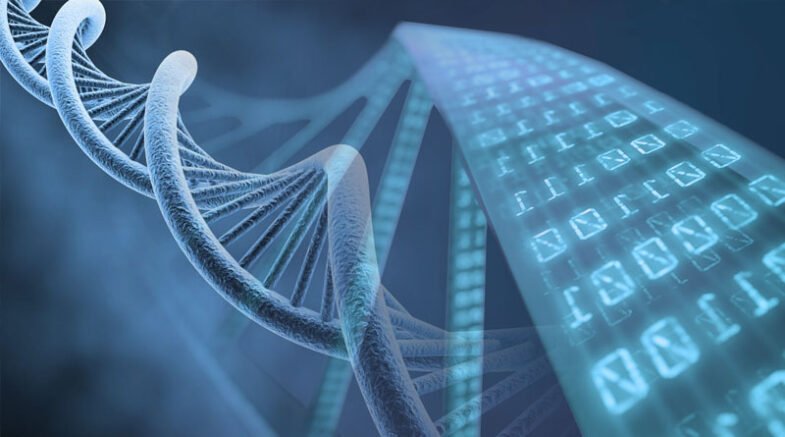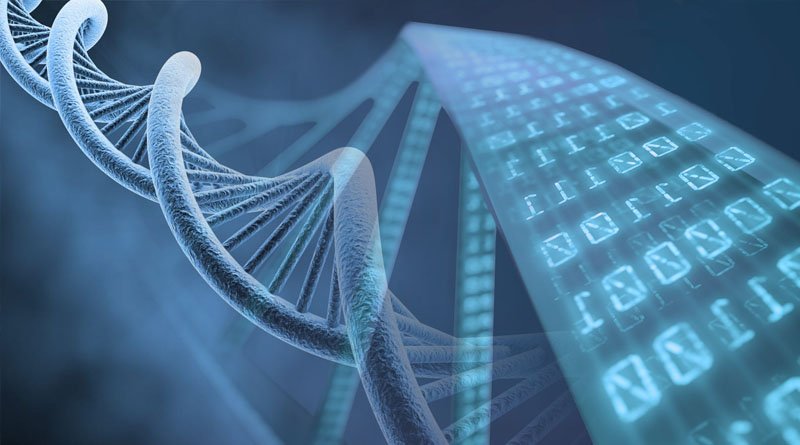The missing side of that hidden sequence “DARK DNA” refers as “Dark matter“ and this make up the 25% of the Universe but still we can’t detect.

With the help of DNA sequencing technology, scientists solved many unraveled questions like “how giraffes got their high necks” and “why humans are similar to their parents and siblings.” All of life’s mysteries are encoded in a DNA sequence, but what if we get something that isn’t encoded in DNA? But it exists. Is this a challenge to scientists’ beliefs? Or something is present in the mystery of DNA that has not yet been discovered? Or can we call it “Dark DNA”?
Discovery of DNA
The Swiss biologist Johannes Friedrich Miescher discovered and identified DNA during research on white blood cells in 1869. James Watson and Francis Crick discovered the structure of the double helix of DNA and proved that DNA stores the genetic information of a living organism.
What is DNA?
According to the NIH, Deoxyribonucleic acid is a complex molecule present inside the cells of humans, animals, plants, archaea, bacteria, fungi, etc. This information is stored in the form of genes, which are then used to determine an organism’s structure and function.
DNA is double-helical (two strands) and ladder shaped. Each base is made of a backbone of phosphate and deoxyribose sugar, and each sugar is attached to one of the four bases: thymine (T), cytosine (C), guanine (G), or adenine (A). The double helix of DNA is connected by chemical bonds between bases: cytosine bonds with guanine and adenine bonds with thymine.
These bases code biological information for RNA molecules or proteins. Our DNA says who we are. The more we understand DNA, the more we understand the surrounding mysteries. The most special thing about the DNA is that the DNA of any two different people is 99.9% identical and only 0.1% different. By DNA barcoding, we identify the quick and precise identification of different organisms.
DNA Sequencing
DNA sequencing is a general laboratory method to understand the sequence of base pairs (A, G, T, C). To determine the order of base pairs within the DNA is known as DNA Sequencing.
Dark Side of DNA / Dark DNA
DNA sequencing technology finds problems in sequencing the side that is GC-rich. This makes it more difficult to detect the genes that we are looking for. The missing side of that hidden sequence “DARK DNA” refers as “Dark matter“ and this make up the 25% of the Universe but still we can’t detect.
Finding of Dark DNA
Adam Hargreaves published an article on August 24, 2017 and said that “his colleagues and he first faced this during the sequencing of the genome of the sand rat (Psammomys obesus), which is a species of gerbil.” that lives in a sandy environment (desert) and is known as the sand rat. They were looking for gerbils’ genes that are responsible for the production of insulin, and they wanted to understand why this animal is specifically sensitive to Type 2 diabetes. But when they looked for a gene called Pdx1 that controls the secretion of insulin, it was missing, and 87 other genes surrounding it were also missing. Including those missing genes, Pdx1 is essential, and animals cannot survive without it.
They discovered that one part of the rat genome has excessive mutations, and all the genes in this mutation have GC-rich DNA, making detection difficult.
This was previously found in birds. Researchers determine that 274 genes are missing from sequenced bird genomes, and these genes also have highly GC-rich regions, and their products are found in the bird’s body, but the gene appears to be missing.
Conclusion
The genome has some regions with a high level of GC content, but they are not sequenced by standard methods. If they are responsible for some product formation in the body, they are supposed to be missing during sequencing, but they are present and cannot be sequenced because of GC-rich regions. These missing regions are called “DARK DNA.”
